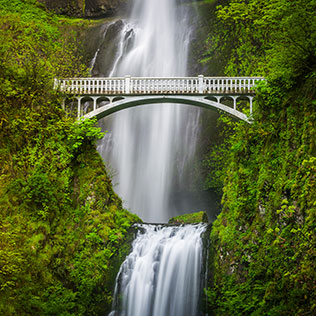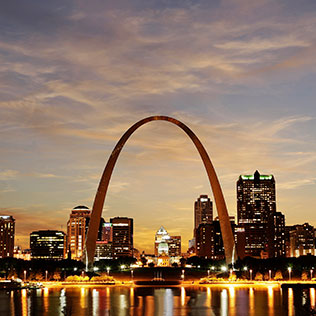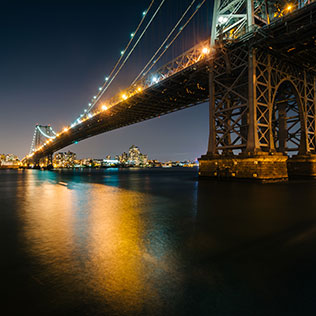Find the River Cruise you’re looking for...
12 Day Viking River Cruise from Twin Cities to St. Louis 2025

River Cruise Description
Embark on a 12-day cruise tour of the fabled Upper Mississippi. Hear stories of pioneers who shaped the Midwest and the Lewis and Clark Expedition, walk in the footsteps of Mark Twain and learn about Norwegian migration to the area. Enjoy the view as your ship navigates through the river’s intricate lock system. And experience the region’s many cultural treasures—from ragtime, polka and Norwegian folk music to Wisconsin cheese, craft beer and hearty stews.Thanks for your interest!
We'll be in touch soon.Error
I'm sorry, but an error has occurred. Try Again| Departure Date | Ship | Priced From (per person) | |
|---|---|---|---|
| Aug 7, 2025 | Viking Mississippi | $5,999 | Call Us! |
| Aug 21, 2025 | Viking Mississippi | $6,999 | Call Us! |
River Cruise Itinerary



Day 1 Twin Cities, Minnesota, United States
Arrive and check in to your hotel.Day 2 Twin Cities, Minnesota, United States
Minneapolis and St. Paul offer a range of outdoor activities, including hiking, biking and bird watching. The Twin Cities is home to more than 500 miles of bike trails, including the scenic Gateway State Trail and the Mississippi River Trail. Hikers can explore the trails in Minnehaha Park or head to more rugged terrain at nearby Lebanon Hills or Afton State Park. Bird watchers can observe a variety of species, including bald eagles, peregrine falcons and great blue herons at the Minnesota Valley National Wildlife Refuge and the Eloise Butler Wildflower Garden.Day 3 Twin Cities, Minnesota, United States
After breakfast, check out of your hotel and begin your journey to your embarkation city.Day 4 Red Wing, Minnesota, United States
Red Wing is known for its Red Wing Shoes, which produced footwear for soldiers in both world wars. The city was named after a Sioux chief whose red-dyed swan wing indicated his rank. The first settlers—many from New England—arrived in the mid-1800s. German, Irish and Scandinavian immigrants followed, bringing skills in tanning, shoemaking, pottery and more. The city boasts a diversity of legacies including Red Wing Stoneware and Pottery, founded in 1877 as the nation’s first commercial potter. Today, Red Wing enjoys a place in the National Trust for Historic Preservation.Day 5 La Crosse, Wisconsin, United States
La Crosse has a deep connection to the towering bluffs and rolling farmland of the Norskedalen, or “Norwegian Valley.” Here, a Norwegian immigrant population has created a unique culture over generations. Historic immigrant villages dot the valley still, a collection of preserved homesteads reflecting a frontier way of life. Today, La Crosse boasts numerous sites on the National Register of Historic Places. Its important architectural landmarks, along with an array of engaging statues along the riverfront, make La Crosse feel like a vast open air museum.Day 6 Dubuque, Iowa, United States
One of Iowa’s few cities laid out among rolling bluffs, Dubuque is called the “Masterpiece on the Mississippi” for its 19th-century ingenuity and modern-day cultural evolution. Timber and boatbuilding were central to the city’s growth, with wood harvested in Minnesota and Wisconsin. The spirit of this river town lives on in the Cathedral Historic District, dotted with well-preserved buildings and authentic period lampposts. Today, the city is praised for its livability and for its riverside developments, including a museum and aquarium dedicated to the Mississippi River.Day 7 Quad Cities, Iowa, United States
Straddling the confluence of the Mississippi and Rock Rivers, the Quad Cities area comprises Davenport and Bettendorf, Iowa, and Rock Island, Moline and East Moline, Illinois. As the only section of the Mississippi that flows from east to west, it is geographically unique. Its tightly knit riverside towns thrived due to thoughtful planning and effective leadership. Today, the Quad Cities rest amid the fertile farmland known as “America’s Breadbasket”—the nation’s most expansive and scenic agricultural region—and is home to agribusiness giants including John Deere.Day 8 Burlington, Iowa, United States
The US flag was first raised over Iowa in Burlington—in 1805—by Lieutenant Zebulon Pike during his Mississippi explorations. Later, it became an outpost for the American Fur Company, a trading enterprise founded by John Jacob Astor. In 1834, it took its present name after the Vermont birthplace of its first settler, John Gray. During the steamboat era, it was a major port along the river. Today, the city is home to many magnificent buildings on the National Register of Historic Places, including the art deco Capitol Theater and the Gothic Revival St. Paul’s Church.Day 9 Hannibal, Missouri, United States
Hannibal is the childhood home of Samuel Langhorne Clemens, or Mark Twain, and the inspiration for his beloved stories of Tom Sawyer and Huckleberry Finn. Prior to the 1803 Louisiana Purchase and arrival of European settlers, a variety of indigenous Native American tribes called the area home. Hannibal grew into the primary port for steamboats and flatboats traveling the Upper Mississippi. “The Unsinkable Molly Brown,” the early 20th-century socialite, philanthropist and survivor of the Titanic tragedy, was also born here.Day 10 Alton, Illinois, United States
Alton lies along The Meeting of the Great Rivers Scenic Route, where the Mississippi and the Illinois Rivers converge. The road to this historic town is considered one of America’s most picturesque drives, with its limestone river bluffs, flowering trees and whistling birds. Along the bluffs is a mural of the Piasa Bird, a dragon-like creature of Native American mythology, with the horns of a deer and a face like a man. First discovered during the 17th century, it had worn away due to the elements. It has since been restored and is today a celebrated landmark.Day 11 St. Louis, Missouri, United States
During the 19th century, St. Louis was a gateway into the Louisiana Territory. In 1904, the city gained recognition as host of a world’s fair (officially called the Louisiana Purchase Exposition), whereby some accounts the ice-cream cone was introduced. Today, it is home to rich architectural treasures—among them, the Cathedral Basilica of St. Louis, with its 41-million-piece mosaic; the Renaissance Revival City Hall; the 19th-century Old Courthouse; and the Gateway Arch, standing along the Mississippi as a monument to westward expansion.Day 12 St. Louis, Missouri, United States
St. Louis was once the gateway to the legendary Wild West, known for its gun-wielding cowboys and law-making sheriffs. Today, the city boasts a world-class cultural scene and one of the leading sporting attractions in the US. The St. Louis Cardinals are one of the most successful baseball clubs, having won 11 World Series championships, second only to the New York Yankees. While the Big Apple is famed for its Central Park, St. Louis has its own green space. Some of St. Louis’ most important cultural sights are located in Forest Park, including the Missouri History Museum.Having trouble deciding which cruise is right for you?

